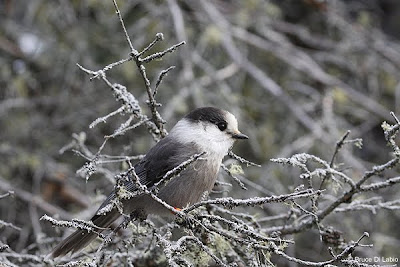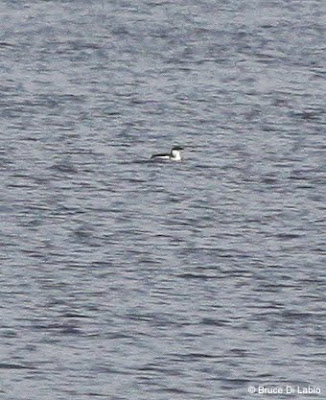The birding today was very good with a number of the Algonquin Park specialties being found at various locations. Gray Jay were numerous with 3 along Opeongo Lake Road, 2 at Spruce Bog Trail, 4 along Mizzy Lake Trail/Old Railway bed and 2 near Mew Lake Road. Boreal Chickadee was found a Wolf Howl Pond and Spruce Bog Trail. We found a total 6 Spruce Grouse along Arowhon Road/Old Railway bed including a group of 5 feeding together. A female Black-backed Woodpecker was found at Wolf Howl Pond along with 2 Fox Sparrow. The biggest surprise was a Red-headed Woodpecker that flew over Wolf Howl Pond. Unfortunately we couldn't relocate it. At Lake of Two Rivers we observed 2 Horned Grebe, 11 Ring-necked Duck and 10 Hooded Merganser. Finches were scarce with 2 Purple Finch, 4 American Goldfinch and a flock of 40+ Pine Siskin. On our drive back to Ottawa a flock of 400+ Brant were observed flying over near Arnprior.
Good Birding, Bruce
Directions: Courtesy Ron Tozer
Algonquin Park is three hours north of Toronto, via Highways 400, 11 and 60. Follow the signs, which start in Toronto on Highway 400. From Ottawa, take Highway 17 to Renfrew, then follow Highway 60 to the park. Kilometre markers along Highway 60 in the Park go from the West Gate (km 0) to near the East Gate (km 56). Get your park permit and the park tabloid (with a map of birding locations mentioned here) at the gates.
The Visitor Centre at km 43 has recent bird sightings, feeders, and information. The centre will be open on weekends only after this weekend
(October 29-30) from 9 am to 5 pm. Birders visiting during the week may be able to enter via the service entrance (right end of building) to view the feeders, after checking in with staff first.
Algonquin Park birding updates and information are available at: www.algonquinpark.on.ca

Red-breasted Nuthatches were easy to locate in the park.

Spruce Grouse
















































